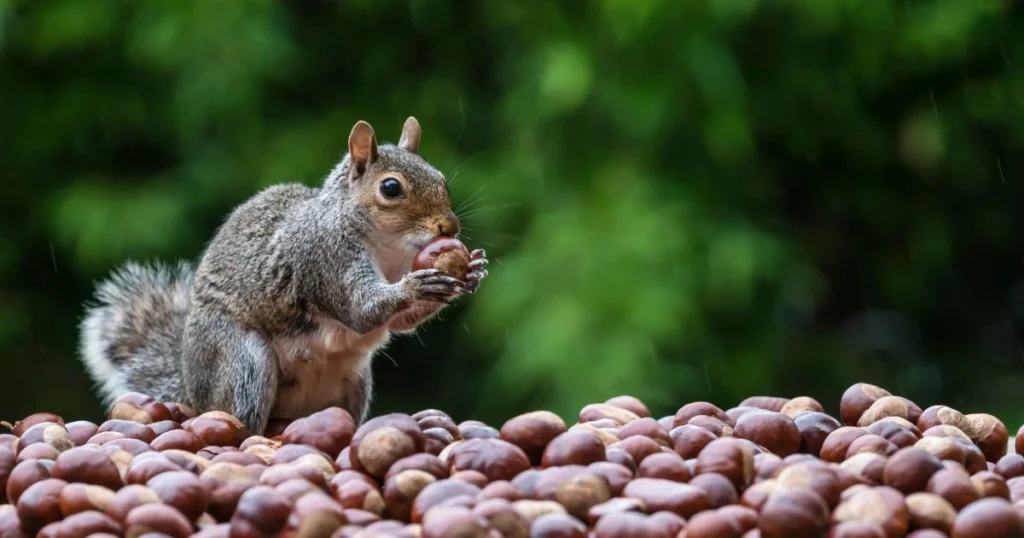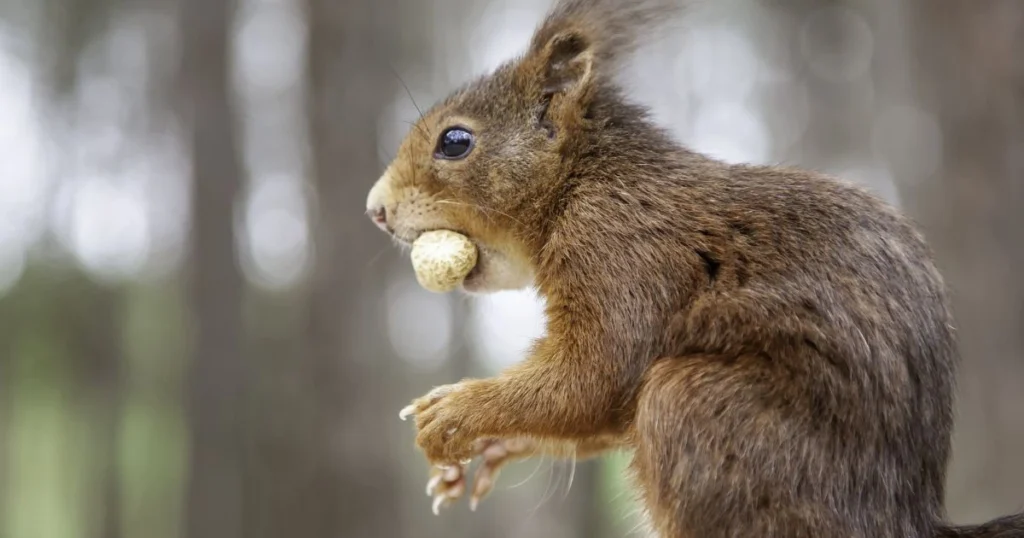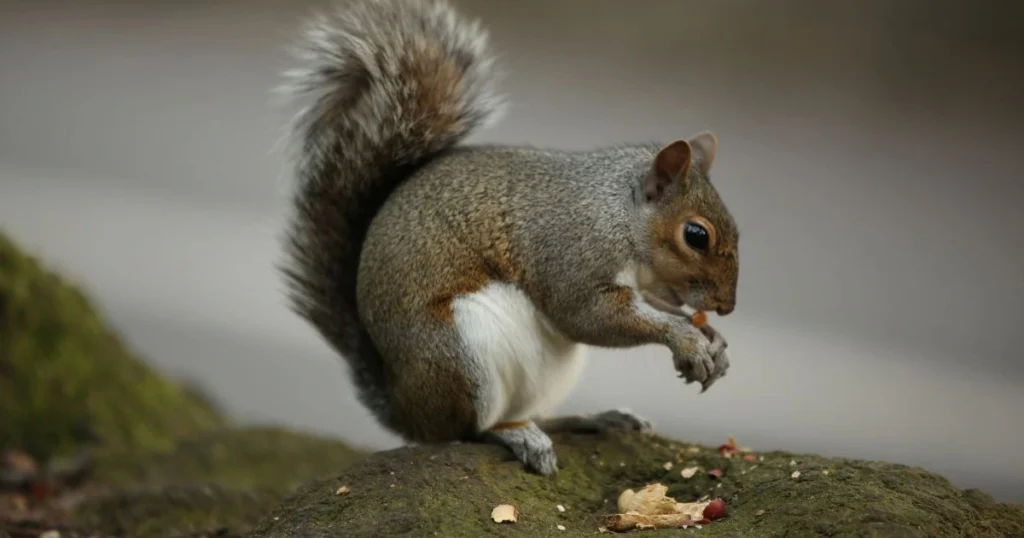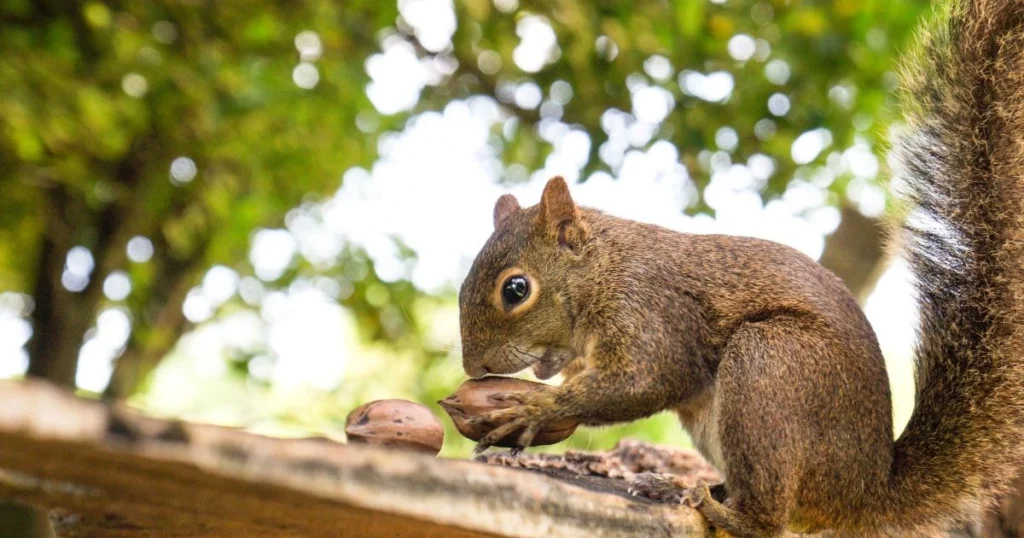
Understanding squirrels' impressive olfactory capabilities provides valuable insight into their foraging behavior and survival strategies. Squirrels possess an extraordinary sense of smell that allows them to detect nuts from considerable distances. This article delves into the factors influencing their sense of smell and how far away they can smell nuts, enhancing our appreciation of these agile creatures.

Squirrels, belonging to the family Sciuridae, are known for their exceptional sensory adaptations. Their sense of smell is finely tuned, making them adept foragers in their natural habitats. Their unique nasal structure enhances their ability to detect scents, particularly food sources like nuts. Their keen olfactory senses allow them to locate food hidden beneath snow, dirt, or leaves, enabling them to survive even in challenging conditions.
The olfactory system of squirrels is complex and finely developed. The olfactory bulb, which processes scent information, is relatively large compared to the size of their brains. This anatomical feature enables squirrels to detect a wide range of odors. Additionally, squirrels have more olfactory receptors than many other mammals, further enhancing their ability to identify specific scents.
Under optimal conditions, squirrels can smell nuts up to a quarter of a mile (approximately 400 meters) away. Several factors, including the type of nut, environmental conditions, and the direction of the wind influence this impressive capability.

Wind plays a crucial role in how scents travel through the environment. Squirrels utilize the wind to carry scent particles toward them. When the wind blows in their direction, it enhances their ability to detect odors from greater distances. Conversely, their chances of smelling nuts significantly decrease if the wind blows away from them. Wind speed also influences scent dispersal; faster winds can carry scents farther, allowing squirrels to detect food from more considerable distances.
Different nuts emit varying scent levels, impacting how easily squirrels can detect them. Nuts with stronger aromatic profiles, such as walnuts and pecans, are more readily identifiable from afar compared to less fragrant varieties like almonds or hazelnuts. The chemical compounds the nuts release contribute to their scent intensity, influencing the distance from which squirrels can detect them.
Environmental factors play a significant role in scent detection capabilities. Humidity, for example, can enhance the strength and longevity of odors in the air. Higher humidity levels can allow scents to travel farther, making it easier for squirrels to locate nuts. Additionally, temperature affects how scent molecules disperse in the air. Warmer temperatures can increase scent volatility, allowing for greater detection ranges.

Squirrels are primarily foragers, spending a significant portion of their day searching for food. Their acute sense of smell is integral to their foraging strategy. They often rely on it to locate nuts buried in the ground or hidden under leaves and debris.
In preparation for winter months when food is scarce, squirrels engage in a behavior known as caching. This involves storing nuts in various locations for later retrieval. The ability to smell nuts from considerable distances aids them in both finding and remembering where they have hidden their food supplies. Interestingly, squirrels can remember the locations of their caches, but their sense of smell helps them locate these hidden treasures when needed.
Squirrels are not the only animals seeking nuts; they often compete with other wildlife, such as birds and rodents. Their keen sense of smell gives them a competitive advantage in locating food resources before others can. The ability to detect nuts from afar ensures they can secure their food supply and thrive in their habitats.
Beyond foraging, smell also plays a role in how squirrels communicate with each other. Squirrels release scents through urine, feces, and body oils to mark territory and communicate reproductive status. The ability to detect these scents from distances enhances their social interactions and helps them avoid confrontations with other squirrels.
Scent marking is crucial for establishing social hierarchies among squirrels. When a squirrel smells the urine or other markings left by another, it can determine the presence of a competitor and adjust its behavior accordingly. This olfactory communication reduces confrontations and helps maintain the balance within their habitats.

In summary, under optimal conditions, squirrels can smell nuts from an impressive distance of up to a quarter of a mile (approximately 400 meters). Several factors, including wind direction, the type of nut, and environmental conditions, influence their extraordinary sense of smell. Understanding squirrels' remarkable olfactory capabilities enhances our appreciation of these agile creatures and highlights their adaptability in finding food in diverse environments.
If you are experiencing issues with wildlife intrusions, such as squirrels or other animals disrupting your property, it's crucial to address these concerns promptly. Critter Stop, a professional humane wildlife removal company, is here to help. With a fantastic reputation and excellent customer reviews, Critter Stop provides high-quality work and exceptional customer service. Call Critter Stop at (214) 234-2616 for a free inspection to effectively solve your wildlife or pest removal problems.
This section addresses common questions related to squirrels' sense of smell. Squirrels have an impressive olfactory ability that plays a crucial role in their survival, helping them locate food and navigate their environment. Below are some frequently asked questions that explore the extent of their smelling capabilities.
Under ideal conditions, squirrels can smell nuts from an impressive distance of up to a quarter of a mile (approximately 400 meters). This remarkable ability is influenced by factors like wind direction, the type of nut, and environmental conditions such as humidity. When the wind is favorable, squirrels can detect the scent of nuts hidden beneath leaves or snow, allowing them to forage effectively.
The distance squirrels can smell varies, but they are known to detect scents from hundreds of meters away. Under optimal conditions, such as light winds and high humidity, they may smell food or other scents up to 400 meters. Their keen sense of smell is vital for locating food sources and avoiding potential threats in their environment.
Yes, squirrels can smell humans, but their reaction varies based on their experiences and the situation. When a human approaches, squirrels may detect their scent and become alert, often choosing to flee if they perceive a threat. Squirrels have a good sense of smell for identifying the presence of predators, including humans, which helps them stay safe in their surroundings.
Squirrels can indeed smell peanut butter and are often attracted to its strong aroma. The rich scent of peanut butter can travel through the air, making it detectable from a distance. This is why peanut butter is commonly used as bait in traps; its appealing scent draws squirrels in, making it easier to catch them.
Squirrels are known for their foraging behavior and can smell peanuts, which are many of their favorite food sources. The scent of peanuts can be detected from a considerable distance, especially if roasted or salted, as these processes enhance their aroma. The ability to smell peanuts helps squirrels locate this nutritious snack efficiently.
Weather plays a significant role in how far away squirrels can smell nuts. Humidity can enhance the strength of odors, allowing squirrels to detect scents from greater distances. Additionally, wind direction and speed can affect scent dispersion; favorable wind conditions can carry scents farther, while calm or unfavorable winds may limit their detection range.
Squirrels rely heavily on their sense of smell to locate food in their environment. When searching for nuts or other food sources, they use their keen olfactory senses to detect scents from buried or hidden items. This ability allows them to forage and store food efficiently, especially when resources are scarce, such as in winter.
Visit our Critter Library and learn more about our furry friends







